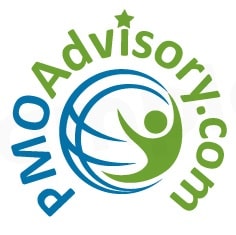The news appears to be affirming what we are feeling- we are in an almost constant state of anxiety and Risk Management can help! Anxiety has a healthy and an unhealthy form; the healthy form prods us to do something, to respond to a situation, whereas the unhealthy form paralyzes. I often say time is the cruelest constraint. In this example we can see how healthy anxiety can keep us on schedule in response to urgency; the train waits for no one. So is this anxiety we are feeling perhaps telling us that something needs to change, that we need new responses?
Enter the Risk Management process; like all Knowledge Areas Risk Management begins with a plan. The act of planning is really just thinking and when performed inclusively, as it is most effectively done, it can reach collaborative proportions. So the first step in response to our anxiety is to identify risks. What are the concerns, causes and impacts across multiple categories and timeframes; looking inward, what are the strengths and weaknesses, and outward at what opportunities and threats? Risk is really just uncertainty. If uncertainty in and of itself is one of the causes of anxiety in all its forms, just admitting the uncertainty of future events is a big step that risk identification requires. Accessing the opportunity to face the reality of a given situation can in turn allow us to discover new opportunities.
Stepping through Risk Management processes we must proceed to qualify and therefore prioritize the likely long list of risks in front of us. Time is still the cruelest constraint and may require more urgent assessments causing certain risks to rise to the top of the priority list. Through a sustainability lens we can categorize risks across human, economic and environmental impacts and also start to honestly assess their likelihood across all categories. One newer tool, the Health Impact Assessment (HIA) is being leveraged to demonstrate benefits from examining a full set of impacts. For example major road projects are prioritized based on a number of factors- on the human dimension it’s the number of accidents and deaths. A recent project in Essex County New Jersey updated a dangerous thoroughfare (based on the death toll) by reducing speed limits and narrowing the road with curb improvements including adding green infrastructure. Human benefits (less people dying), environmental improvements (improved storm water management), and economic benefits in the form of more people walking and shopping locally were documented in the HIA, thus revealing the full value of the project through risk management best practices.
Deciding on risk responses might be the place where the requirement for an open mind affirms itself even as the mind needs to be open at the start of Risk Management planning. We have to choose responses that are realistic to address the risk at hand; responses must be within our sphere of influence and focus on real causes not assumptions — the latter too often prevalent in emotionally charged situations. Good Project Managers/Risk Managers validate assumptions and information along the way looking beyond what’s in front of them, assuring that the information they are basing their assumptions on is not just validating what they want it to validate. The Delphi Technique similarity seeks to root out groupthink and peer pressure to get at the reality of the situation.
Working with an underlying assumption that all any of us can control is our response, we are brought back to another major tenant of Risk Management- ownership. Risk Management requires accountability. Like Project Managers, the best Risk Managers are also emotionally intelligent; they understand how their own emotions can move quickly to thought and then to action if there’s no sentential. Brain science has revealed that fear is an innate response of the amygdala which can in turn produce unhealthy anxiety among other negative emotions if allowed free reign. Rather than allow for the anxiety to slip into a spiral of fear that paralyzes and prevents effective assessment, the Project Manager/Risk Manager looks at it and gives it a name; indeed Risk Management requires courage! Once the Project Manager/Risk Manager understands the processes to respond to their own emotions they are much better equipped to work outward, checking their own ego at the door in order to lead the broader project team to project success through effective risk management processes.
Anxiety senses the need for change but without thoughtful and structured processes we can fall deeper into our own minds. Rather, the energy we spend on worrying can be redirected toward solutions. There is in the end one constant- change. When we embrace change through Risk Management processes we can leverage the opportunity to be the change.
